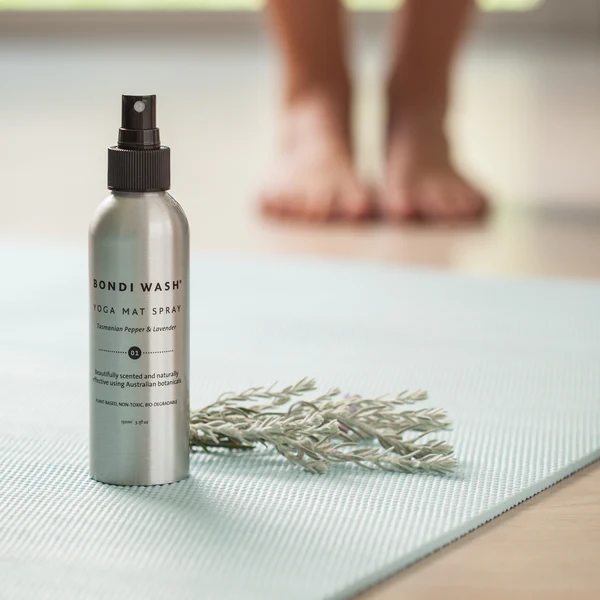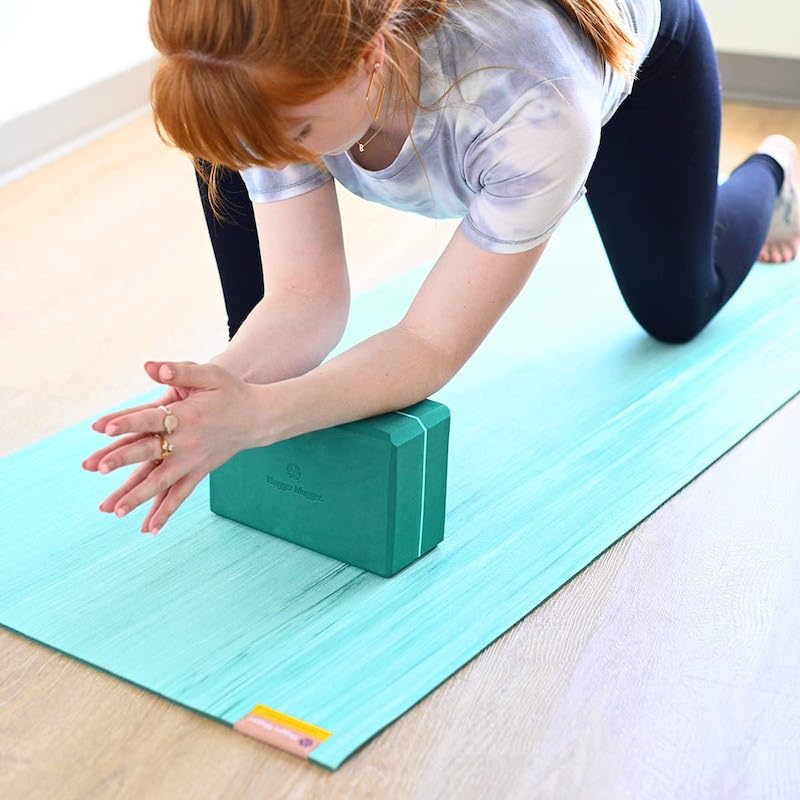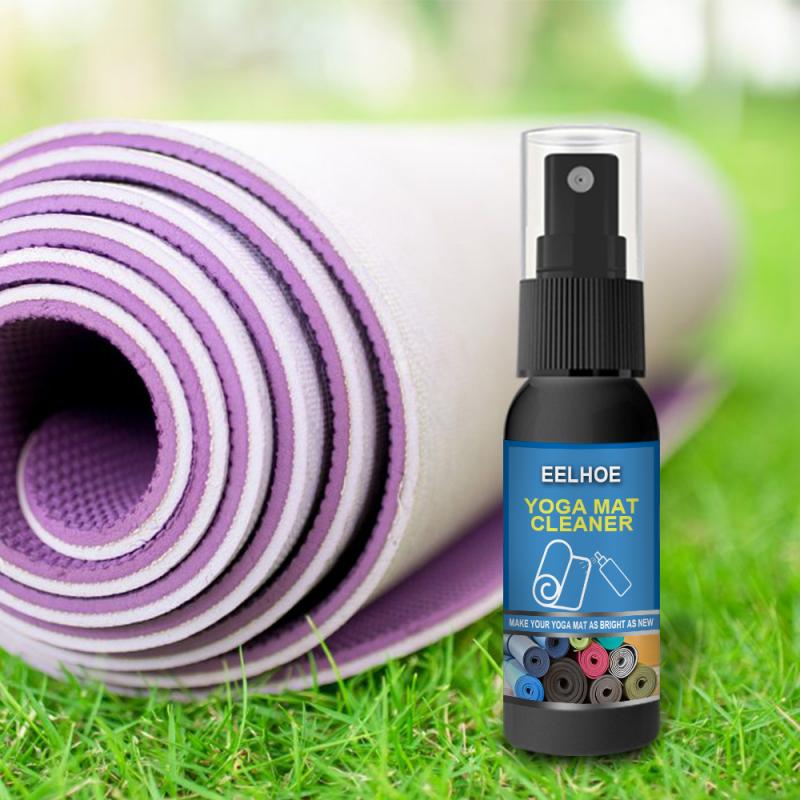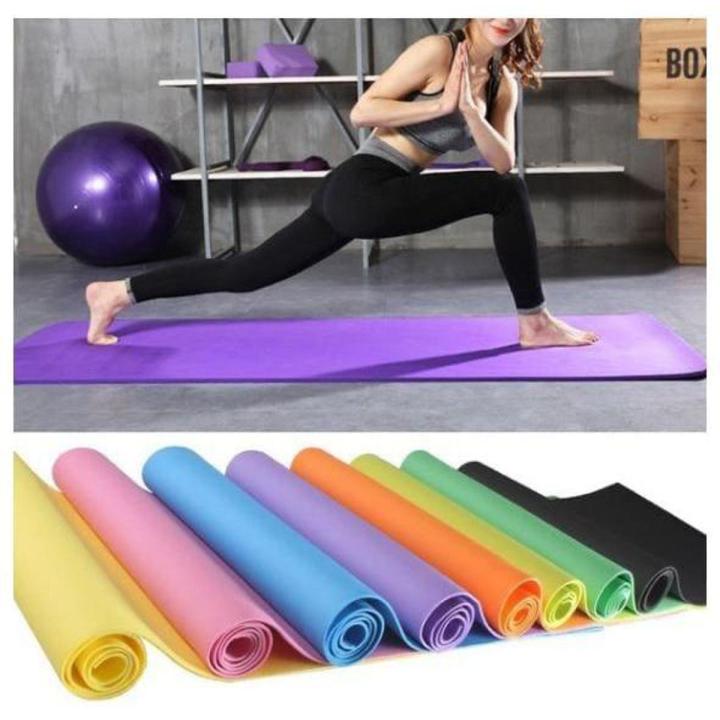Importance of Keeping Your Yoga Mat Clean
How to wash yoga mat? Keeping your yoga mat clean is crucial. It keeps germs at bay, ensuring a hygienic practice area. Over time, yoga mats can collect sweat, oils, and dirt. This can lead to bacteria and odor buildup. Regular cleaning extends your mat’s life and maintains its grip. A clean mat also enhances your practice by offering a pleasant surface. Without distracting smells or sticky spots, you focus better. Moreover, a well-maintained mat reflects your commitment to your yoga journey. In short, cleaning your yoga mat improves hygiene, longevity, and your overall yoga experience.
Types of Yoga Mats and Their Cleaning Requirements
When considering how to wash your yoga mat, you must first identify its type. Different materials demand specific cleaning methods. Here are common types of yoga mats and their cleaning needs:
- PVC Yoga Mats: Known for durability, PVC mats are easy to clean. Use a gentle soap and water solution. Avoid high heat, as it can damage the mat.
- Rubber Yoga Mats: A natural choice, rubber mats require mild soap and warm water. Keep these mats away from sunlight to prevent drying out.
- TPE Yoga Mats: Thermo Plastic Elastomer (TPE) mats are eco-friendly. Clean them with a soft cloth dipped in a mild detergent solution. Rinse thoroughly to avoid slipperiness.
- Cotton and Jute Yoga Mats: Absorbent and natural, these mats need a deep clean. You can wash them in a washing machine on a gentle cycle. Use a mild, natural detergent.
- Microfiber Yoga Mats: Great for hot yoga, these mats absorb sweat. Hand wash with cold water and a gentle detergent to maintain their softness.
Remember, frequency and method are key to keeping your yoga mat in top condition. The type of yoga you practice and how often you use your mat will guide your cleaning schedule. Light users might clean their mat once a week, while daily practitioners might do so after each session. Always consult the manufacturer’s instructions for the best care practices.
Preparing to Clean Your Yoga Mat
Before diving into the cleaning process, preparation is key. Get your yoga mat ready for a thorough wash with the following steps:
- Gather Your Supplies: To start, collect the cleaning essentials. You will need mild soap, a soft cloth or sponge, and clean water. If you prefer, ready a natural cleaning solution or purchase a specialized yoga mat cleaner.
- Choose an Appropriate Area: Find a space for cleaning that is flat and well-ventilated. A bathtub, a large sink, or an outdoor area works well. Ensure it is a place where water can spill without causing issues.
- Check Manufacturer Instructions: Before you begin, consult your yoga mat’s care guidelines. These instructions can provide specific advice on how to wash your yoga mat without damage. Not all mats are the same, and some require special care.
- Roll Out Your Mat: Lay out your yoga mat flat. A flat surface allows you to reach every part of the mat easily.
- Spot Clean Visible Dirt: In case there are noticeable spots or stains, treat them first. Use a cloth dipped in soapy water to gently rub away the dirt.
- Prepare Your Cleaning Solution: If using a homemade cleaner, mix it now. A simple solution can be water with a few drops of mild detergent. For natural cleaning, mix water with white vinegar or tea tree oil for their disinfecting properties.
- Timing: Pick a time when your mat can be cleaned without a rush. It will need time to dry properly after washing, so plan accordingly.
These preparations set the stage for a successful, hassle-free cleaning process. Keep in mind the type of mat you have and any special requirements it might have. Taking a moment to prepare properly can extend the life of your yoga mat and ensure a pleasant yoga experience.
Step-by-Step Cleaning Process
Cleaning your yoga mat is a simple process that can be accomplished with ease following these steps:
- 1. Create Cleaning Solution: Begin by mixing water with a mild soap. Keep the ratio appropriate to avoid overly sudsy water.
- 2. Soak Cloth or Sponge: Dip a soft cloth or sponge into the cleaning solution. Wring it out to prevent excess water.
- 3. Wipe the Mat: Gently wipe the yoga mat with the damp cloth or sponge. Start from one end and move to the other.
- 4. Scrub if Needed: For tough spots, use a bit more pressure. Scrub carefully without damaging the mat’s surface.
- 5. Rinse the Mat: After wiping, rinse your mat with clean water. Make sure no soap remains on the mat’s surface.
- 6. Remove Excess Water: Pat the mat dry with a towel to remove extra water. Be gentle to keep the mat’s shape.
- 7. Air-Dry: Lay the mat flat in an area with good airflow. Avoid direct sunlight during drying.
- 8. Repeat If Necessary: If your mat still seems dirty, repeat the process.
- 9. Inspect the Mat: Once dry, inspect for cleanliness. Your mat is now ready for your next yoga session.
This step-by-step guide ensures a clean and hygienic yoga mat. It’s crucial to know how to wash your yoga mat following these instructions. Regular cleaning keeps your mat in good condition, offering a healthy environment for your practice.
Natural Cleaning Solutions for Your Yoga Mat
When it comes to cleaning your yoga mat, opting for natural solutions is a smart choice. Not only are they eco-friendly, but they also reduce the risk of damaging your mat with harsh chemicals. Here’s how to use natural ingredients to keep your mat fresh:
- Use White Vinegar: Mix one part water with one part white vinegar. Apply with a soft cloth and wipe down your mat. The vinegar acts as a disinfectant.
- Tea Tree Oil Mixture: Combine water with a few drops of tea tree oil. Its natural antifungal properties help eliminate germs and odors.
- Baking Soda Paste: For tougher stains, create a paste with water and baking soda. Apply it to the spot, let sit for a few minutes, and then wipe away.
- Lemon Water Spray: Lemon has natural antibacterial qualities. Mix water with lemon juice and spray it on your mat. Wipe clean for a refreshing scent.
- Witch Hazel: This is gentle on most yoga mats and can be used as a cleaning spray. It’s good for removing oils and sweat.
Remember to always rinse your mat well with water after using any cleaning solution. And, allow it to air-dry completely before rolling or storing. These natural cleaning methods are not only good for your yoga mat but also for the environment and your own health.
Drying and Storing Your Yoga Mat Post-Cleaning
After you’ve washed your yoga mat, drying and storing it correctly is vital. Incorrect drying can lead to mold or mildew, and poor storage can cause damage or lingering odors. Here are some tips to ensure your mat is dried and stored properly:
- Air-Dry Thoroughly: Lay your mat flat to air-dry, preferably in a well-ventilated area. Avoid direct sunlight, as this can damage some yoga mat materials.
- Avoid Heat Sources: Don’t use heaters or dryers to speed up the process. High temperatures can warp or melt certain mat types.
- Flip the Mat: If it takes a long time to dry, flip it over to ensure both sides are dry.
- Store After Dry: Only roll up or store your mat when it is completely dry. This prevents bacteria growth.
- Choose the Right Spot: Store your mat in a cool, dry place, away from direct sunlight.
- Avoid Tight Rolls: Roll your mat loosely or hang it to maintain its shape and avoid creases.
By following these steps, you will protect your yoga mat from damage, and it will be ready for your next session. Remember that the way you care for your mat after cleaning greatly impacts its longevity and your hygiene during practice.
Maintenance Tips to Keep Your Yoga Mat Fresh Longer
Retaining the freshness of your yoga mat extends its lifespan and improves your yoga practice. Here are ways to keep your mat fresh:
- Use a Mat Towel: During sessions, lay a towel over your mat. It absorbs sweat and is easy to wash regularly.
- Regular Air-outs: After each yoga session, unroll your mat to let it air out. This prevents odor buildup.
- Spray After Use: Quickly spray your mat with a natural cleaner after practice. Wipe it down to remove immediate sweat or oils.
- Handle with Clean Hands and Feet: Ensure your hands and feet are clean before stepping onto your mat. This reduces the transfer of oils and dirt.
- Deep Clean Monthly: Set a monthly reminder to give your yoga mat a deep clean, as over time, grime can accumulate even with regular upkeep.
- Use Essential Oils: Add a few drops of essential oils like lavender to your cleaning solution for a pleasant scent and antimicrobial properties.
- Storage is Key: Store your yoga mat in a mat bag or dedicated space. This protects it from dust and other contaminants when not in use.
- Avoid Sharing: Keep your yoga mat personal. Sharing can introduce different bacteria and increase the need for cleaning.
Regular maintenance makes your mat last longer and ensures a clean, safe space for your yoga practice.
Troubleshooting Common Yoga Mat Cleaning Issues
Even the most diligent cleaning routine can sometimes meet with issues. Here are common problems you might face when you wash your yoga mat, along with solutions to fix them.
- Sticky Residue After Cleaning: If your mat feels sticky after a wash, it might be due to soap residue. Ensure you rinse your yoga mat thoroughly with clean water. If stickiness persists, rinse again with a vinegar and water solution.
- Persistent Odors: Sometimes, even after cleaning, smells remain. To combat this, add a few drops of tea tree oil to your cleaning solution for its deodorizing properties. Let the mat dry completely in a well-ventilated space.
- Stains That Won’t Go Away: For stubborn stains, use a baking soda paste. Apply to the stain, let it sit, then gently scrub and rinse.
- Drying Takes Too Long: If your mat isn’t drying fast enough, flip it over to expose both sides to air. Consider using a fan or open windows to improve air circulation but avoid direct sunlight or heaters.
- Discoloration After Washing: Some yoga mats can fade if cleaned with harsh chemicals. Always use mild, natural cleaners to prevent this issue. For future washes, test your solution on a small mat area first.
- Texture Changes: Mats can become less grippy or change texture if not handled gently. Use soft cloths for cleaning and avoid abrasive brushes or sponges.
- Mold or Mildew Formation: If your mat remains damp, it can lead to mold. Ensure it’s fully dry before storing, and keep it in a dry environment. If mold appears, clean the mat with a vinegar solution and dry it thoroughly.
By addressing these common issues with the right solutions, you can keep your yoga mat in prime condition. Remember, proper care when you wash your yoga mat will ensure it remains a clean and reliable partner in your yoga practice.



